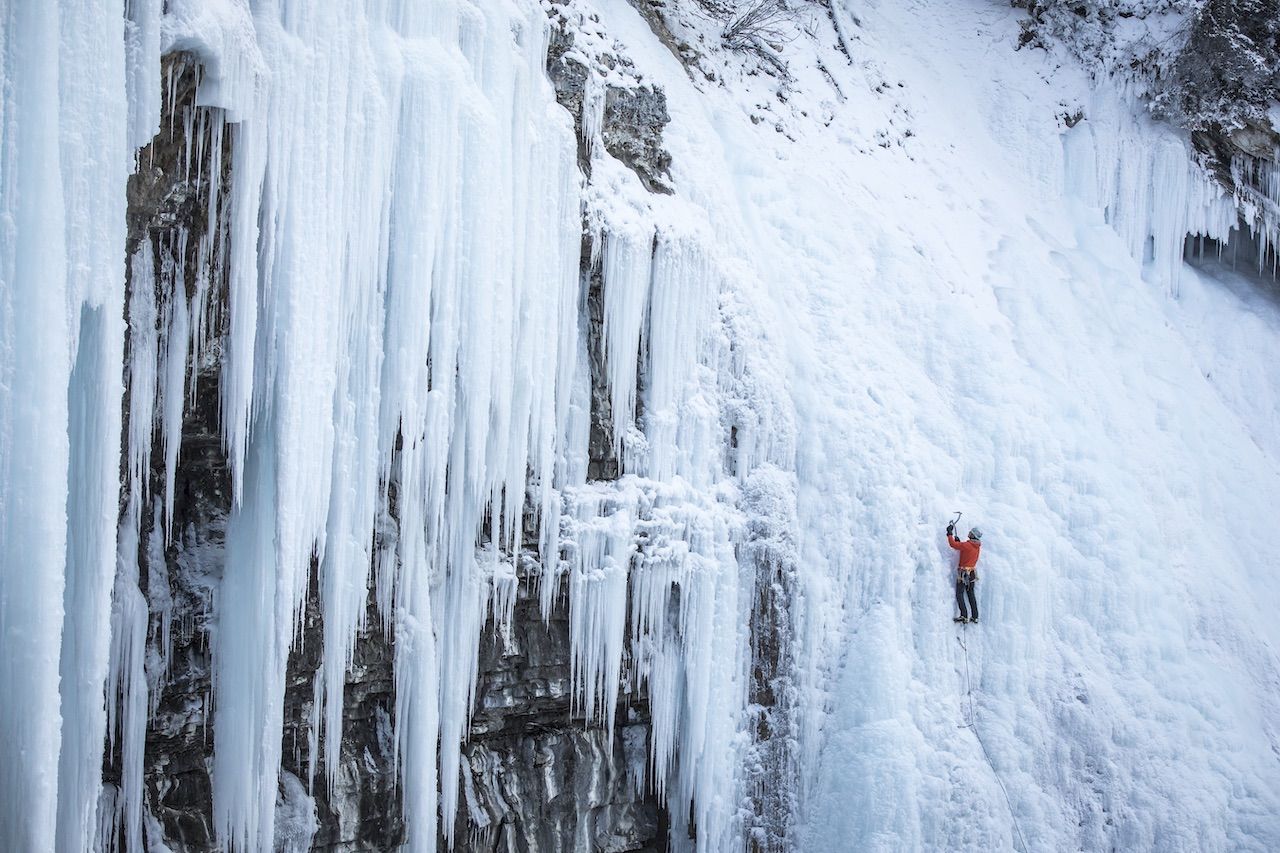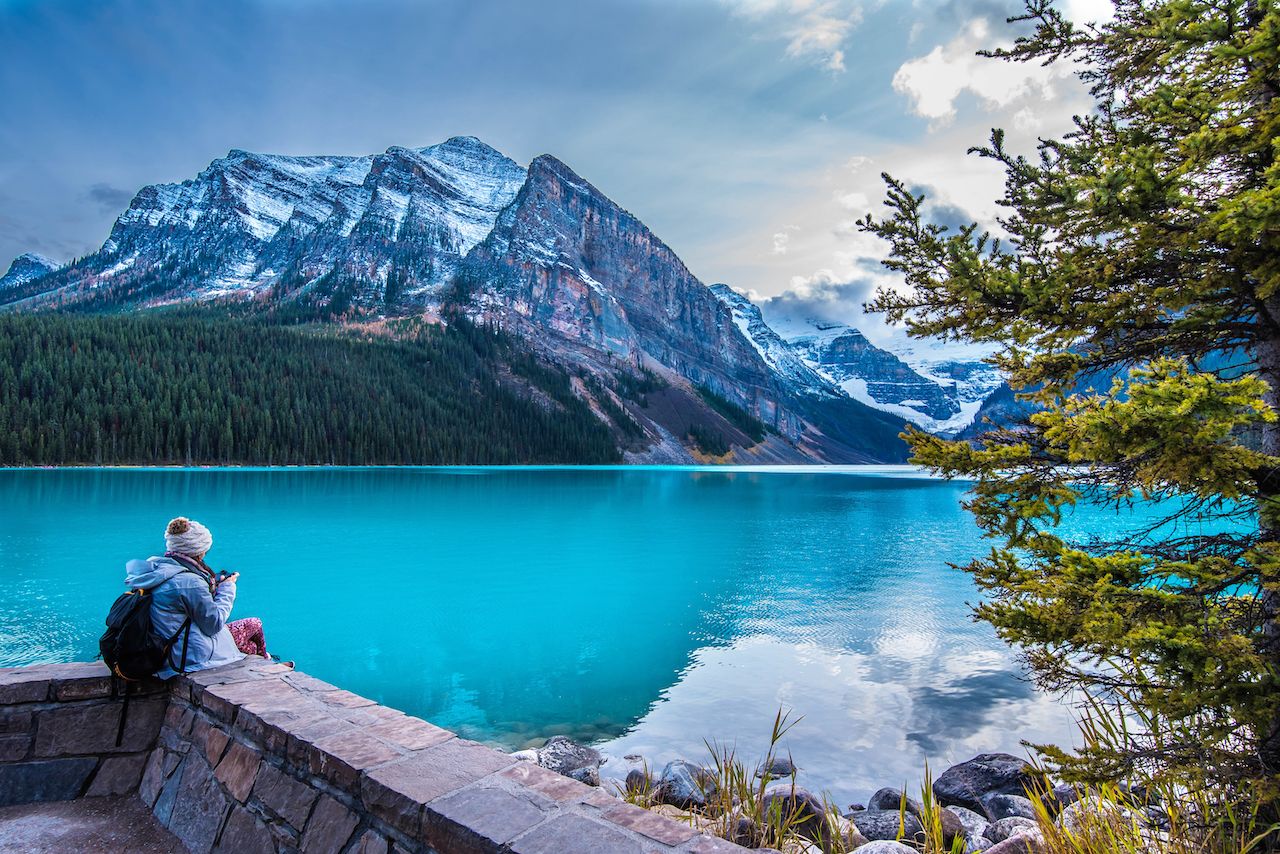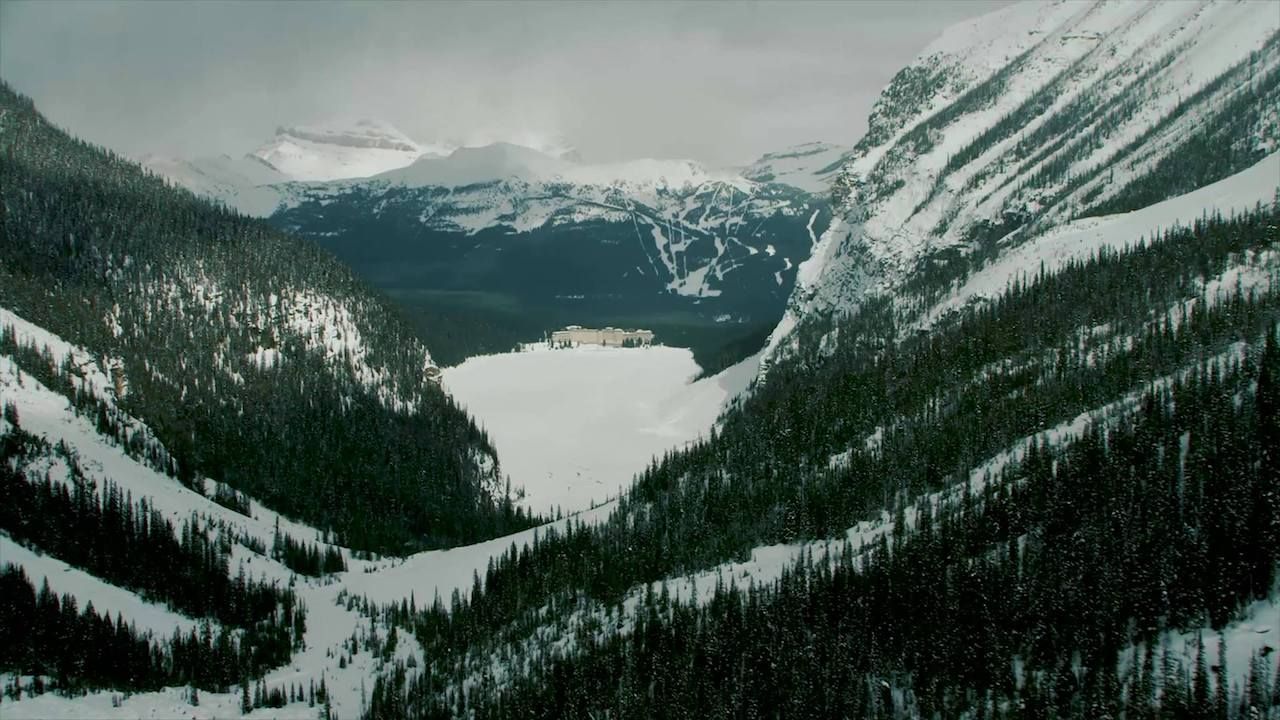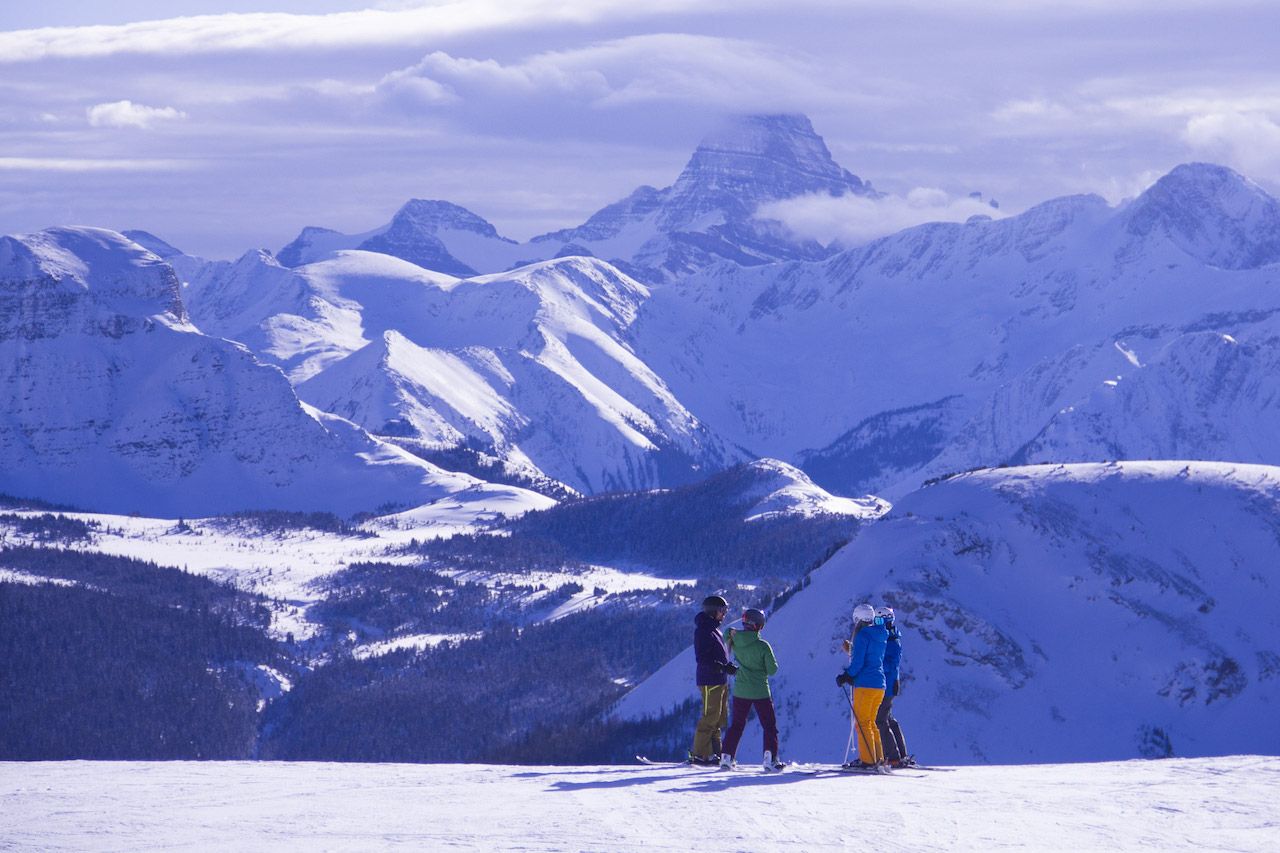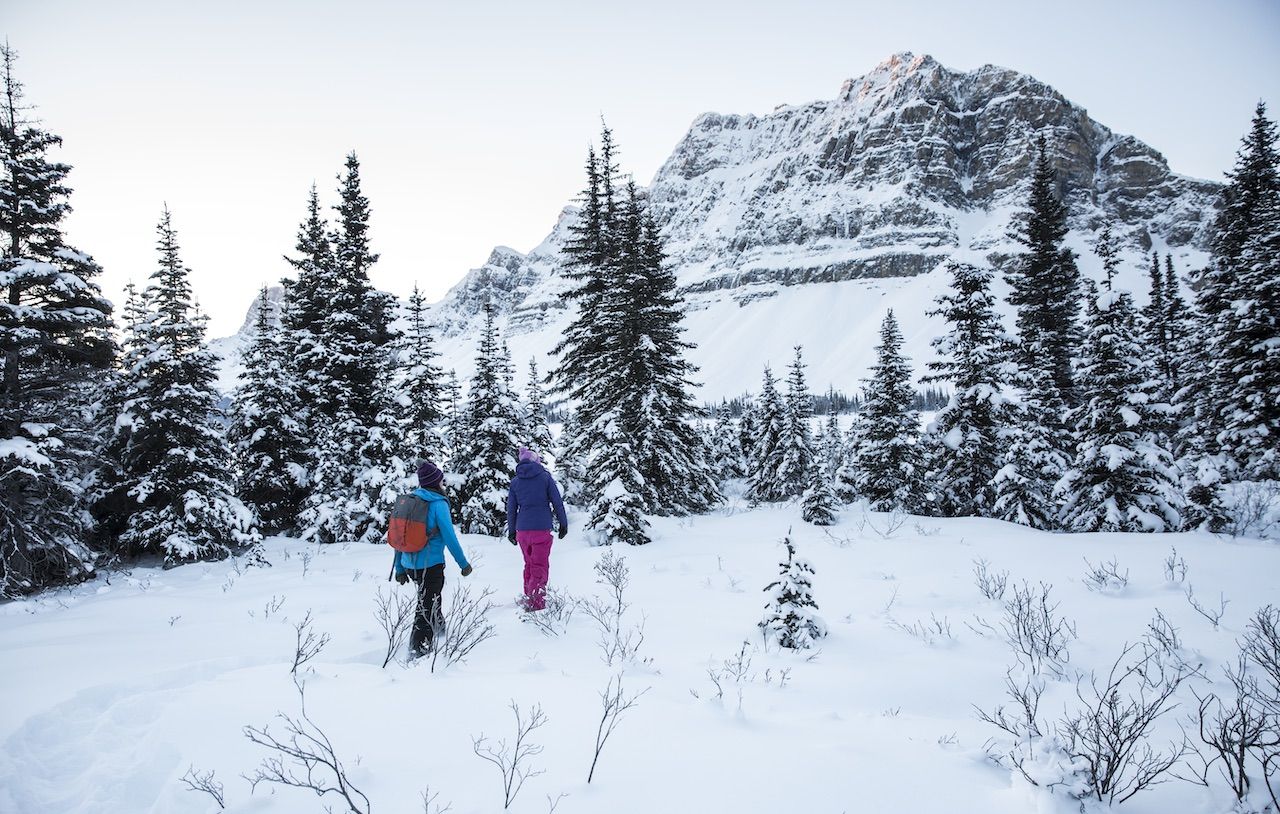The jagged peaks and alpine lakes of Banff National Park fill 2,500 square miles of western Alberta. The area, which encompasses the towns of Banff and Lake Louise, along with three ski resorts and some of Canada’s most rugged backcountry terrain, is both surreal and irresistible. You could almost picture Frodo Baggins on his fantastic mission — traversing his way up and across the mountains, narrowly evading capture among the craggy pitches that stretch across the provincial border into British Columbia.
You can embark on your own enchanted journey here, stepping away into the solitude of North America’s most pristine wilderness, pack on your back and map in hand, and quickly escape from the grind of city life. The best time to do this is in winter when the road-tripping RVers and international sightseers have gone home, and in spring, before the hordes of tourists arrive and it’s still pretty much winter this far up north (there will still BE plenty of snow on the ground). The peace and solitude, coupled with the adrenaline of adventure, will hook you right away.

